Introduction
Figure 1
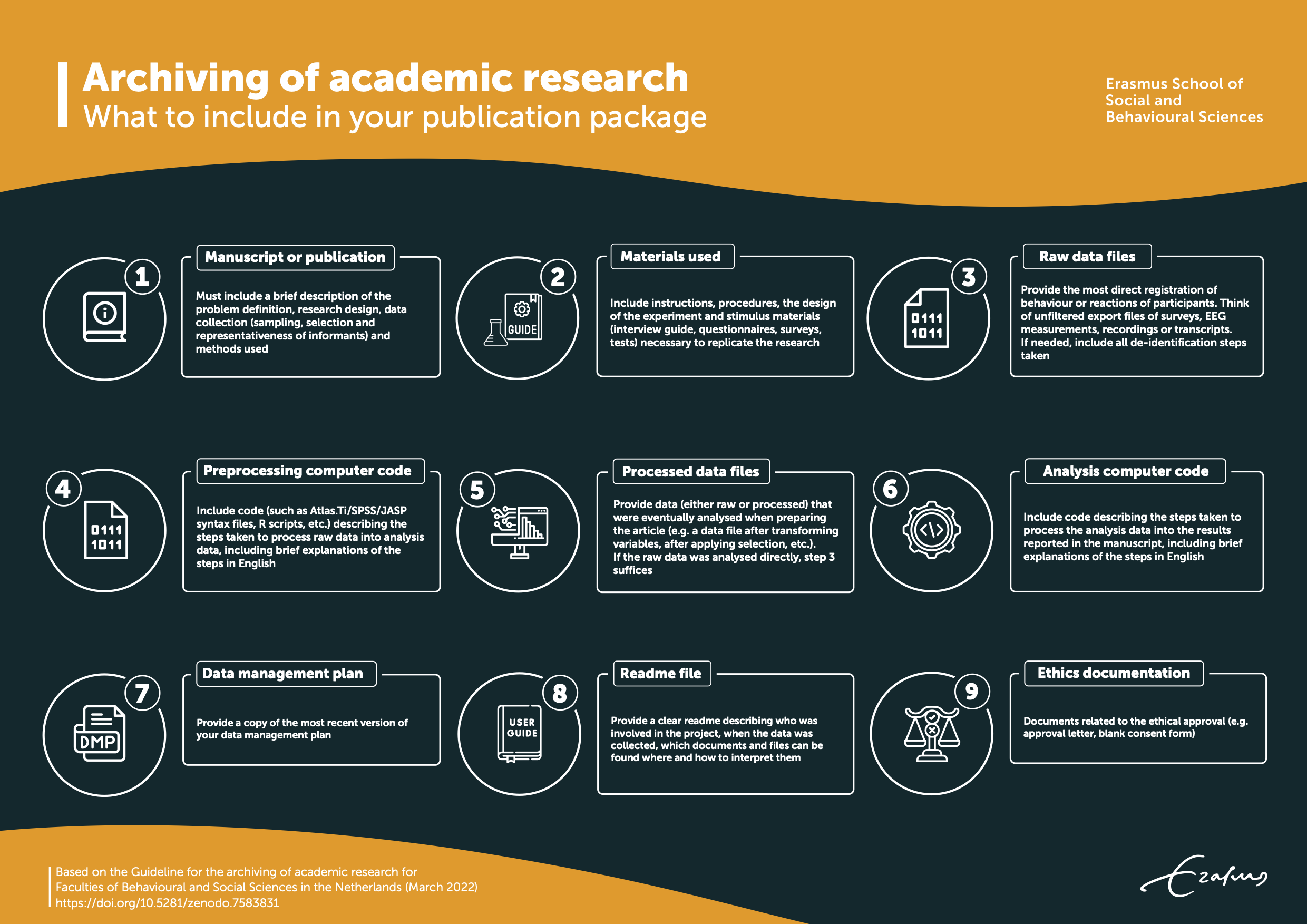
Infographic
summarizing what to include in a publication package, based on the
Guideline for the archiving of academic research for Faculties of
Behavioural and Social Sciences in the Netherlands (March 2022).
Prepare your package - I. Documentation
Data management plan
Figure 1

Infographic snippet:
Provide a copy of the most recent version of your data management
plan
Manuscript or publication
Figure 1
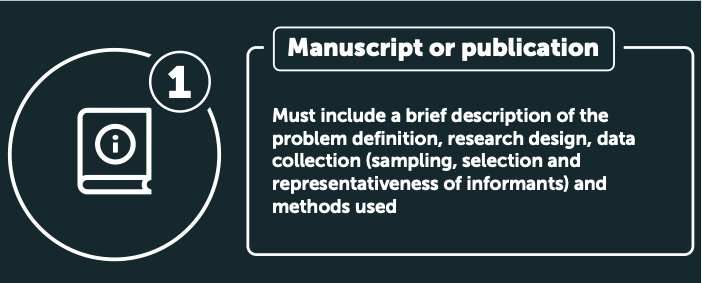
Infographic snippet: Must include a brief
description of the problem definition, research design, data collection
(sampling, selection and representativeness of informants) and methods
used
Readme file
Figure 1
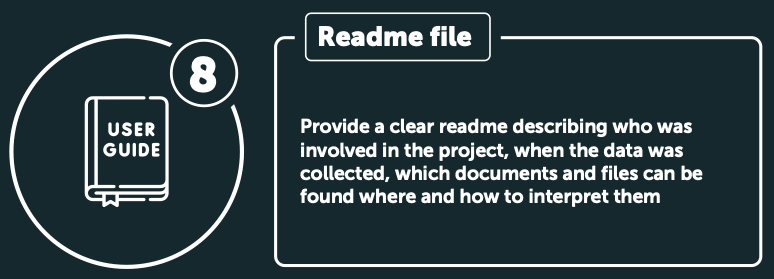
Infographic snippet:
Provide a clear readme describing who was involved in the project, when
the data was collected, which documents and files can be found where and
how to interpret them
Ethics documentation
Figure 1
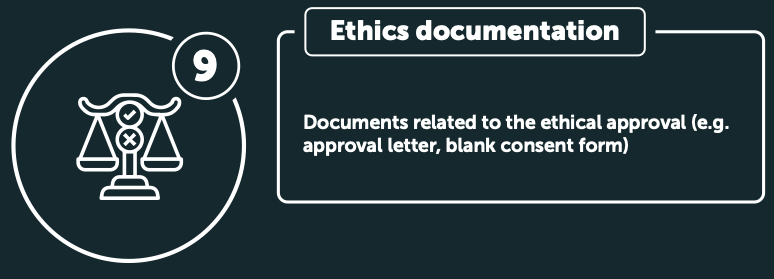
Infographic snippet:
Documents related to the ethical approval (e.g. approval letter, blank
consent form)
Prepare your package - II. Materials, data, code
Materials used
Figure 1
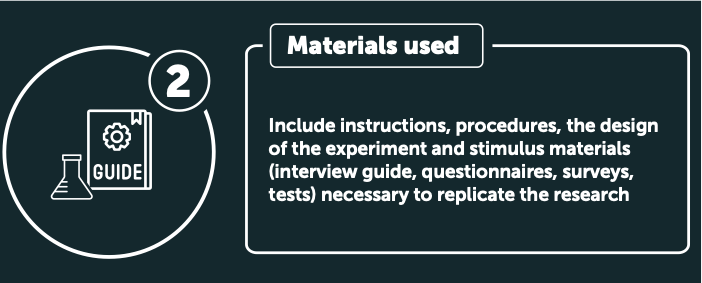
Infographic snippet:
Include instructions, procedures, the design of the experiment and
stimulus materials (interview guide, questionnaires, surveys, tests)
necessary to replicate the research
Figure 2

Figure: Codebook from the EUR publication
package example
Raw data files
Figure 1
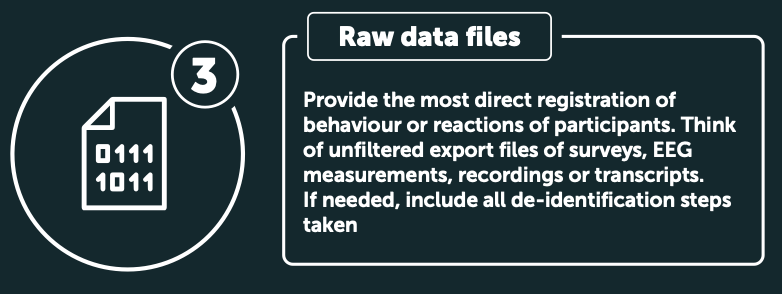
Infographic snippet:
Provide the most direct registration of behaviour or reactions of
participants. Think of unfiltered export files of surveys, EEG
measurements, recordings or transcripts. If needed, include all
de-identification steps taken
Figure 2
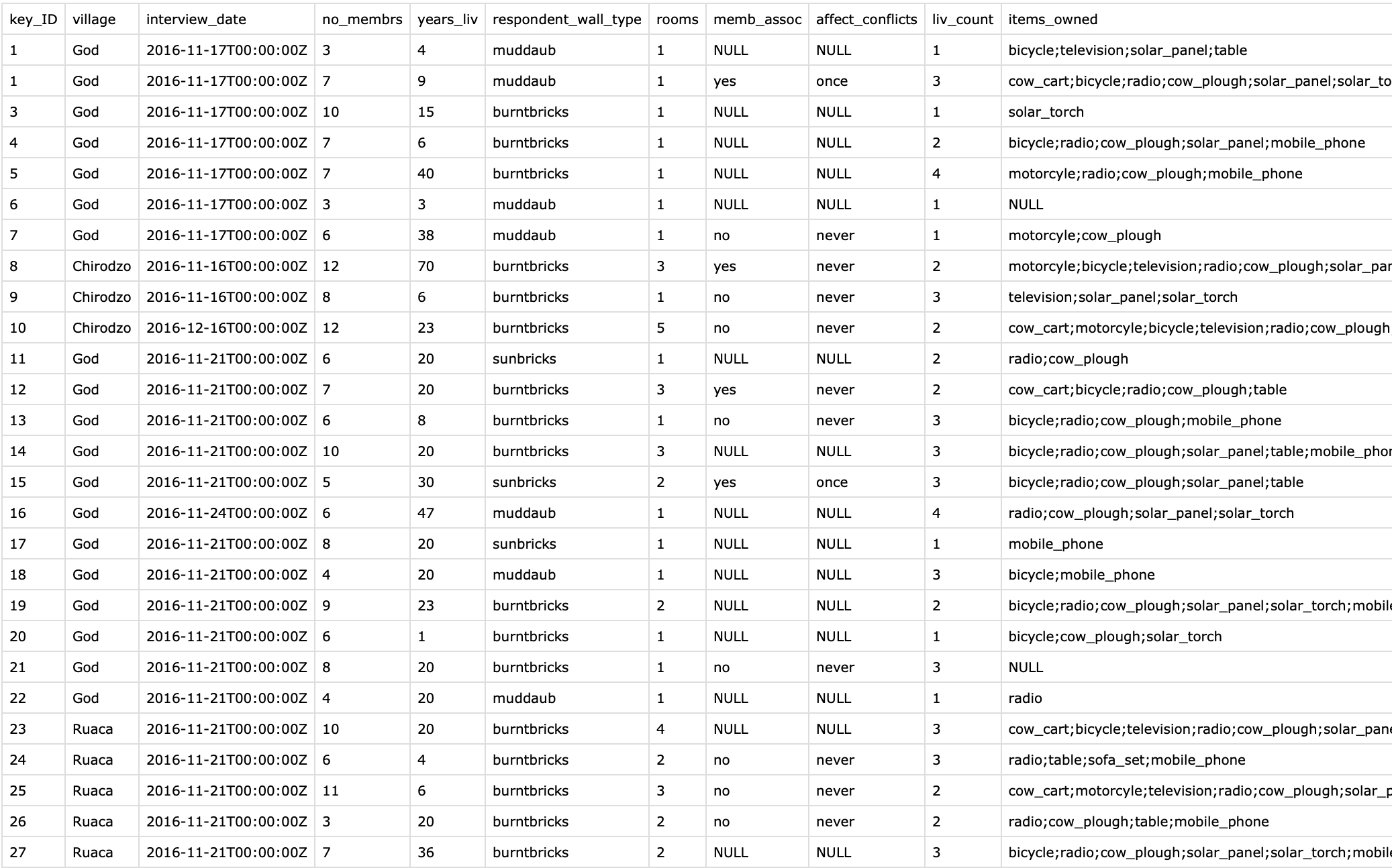
Figure: Raw data from the EUR publication
package example
Preprocessing computer code
Figure 1
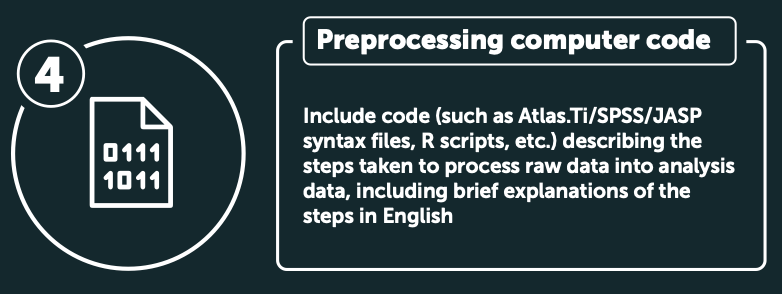
Infographic snippet:
Include code (such as Atlas.Ti/SPSS/JASP syntax files, R scripts, etc.)
describing the steps taken to process raw data into analysis data,
including brief explanations of the steps in English
Processed data files
Figure 1
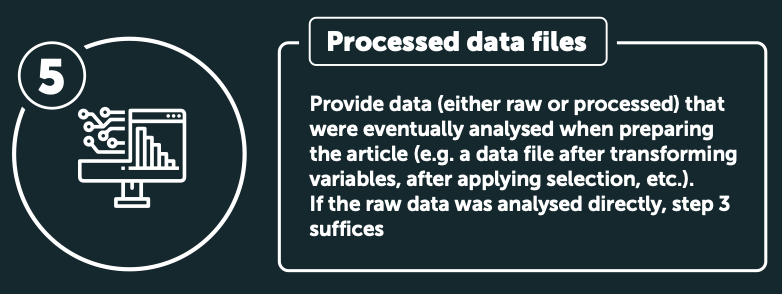
Infographic snippet:
Provide data (either raw or processed) that were eventually analysed
when preparing the article (e.g. a data file after transforming
variables, after applying selection, etc.). If the raw data was analysed
directly, step 3 suffices
Figure 2
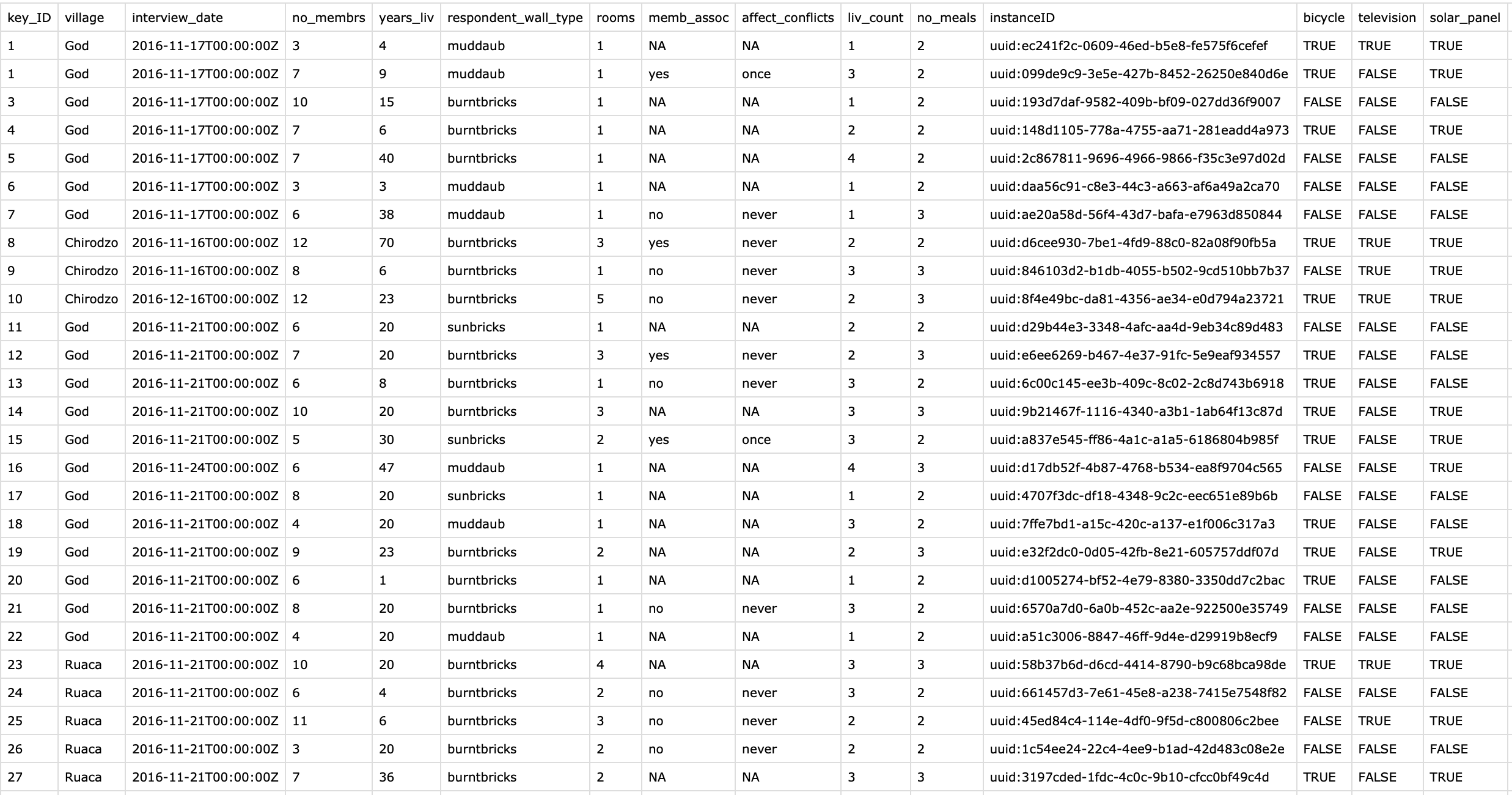
Figure: Processed data from the EUR publication
package example
Analysis computer code
Figure 1
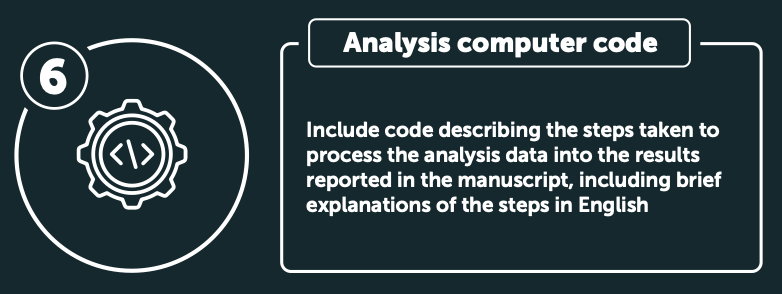
Infographic snippet:
Include code describing the steps taken to process the analysis data
into the results reported in the manuscript, including brief
explanations of the steps in English

